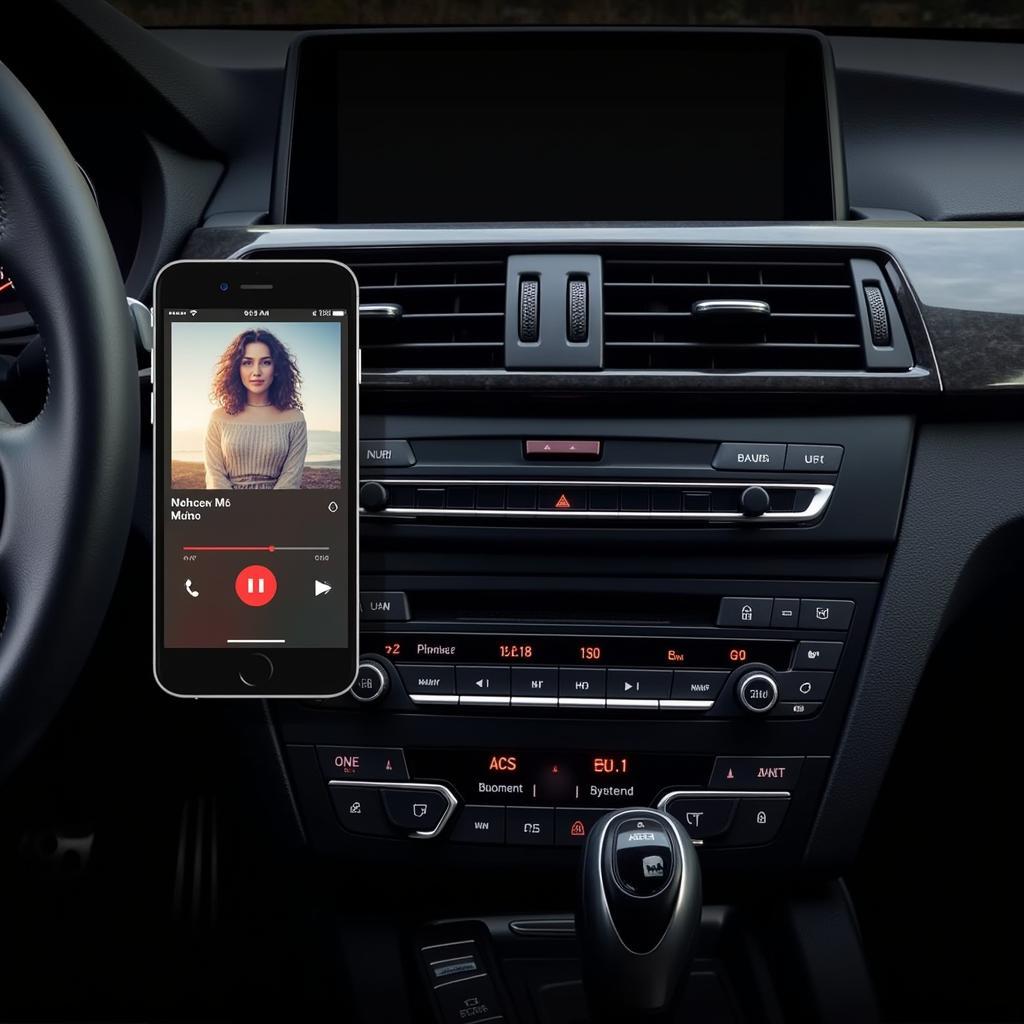Tired of the lackluster sound system in your BMW E93? You’re not alone. Many E93 owners find the factory audio system leaves much to be desired. But don’t despair – a BMW E93 audio upgrade can transform your driving experience, turning your car into a concert hall on wheels.
Understanding Your BMW E93 Audio System
The BMW E93 audio system, while functional, often lacks the depth and clarity that discerning audiophiles crave. The base system typically includes a head unit, speakers, and an amplifier, all designed to be cost-effective rather than high-fidelity.
Common Issues with the E93 Sound System
Here are some common complaints:
- Weak Bass: The factory speakers often struggle to produce rich, powerful bass, leaving your music feeling flat.
- Muddy Midrange: Vocals and instruments can sound muddled together, lacking definition and detail.
- Harsh Treble: High frequencies might come across as shrill or piercing, especially at higher volumes.
These issues stem from limitations in the factory components. Upgrading your E93’s audio system can address these shortcomings and unlock a whole new level of audio enjoyment.
Diagnosing the Problem: Hardware or Software?
Before diving into upgrades, it’s crucial to pinpoint the root cause of your audio woes. Is it a hardware issue with your speakers or amplifier? Or could it be a software glitch affecting your head unit’s performance?
Hardware Issues
- Blown Speakers: Listen for distortion, crackling, or buzzing sounds, particularly at higher volumes.
- Faulty Amplifier: If you experience a sudden loss of sound or significantly reduced volume, a failing amplifier could be the culprit.
- Wiring Problems: Loose or damaged wiring can also lead to audio issues, so inspecting the connections is crucial.
Software Issues
Sometimes, the problem isn’t the hardware itself, but rather the software that controls it.
- Outdated Firmware: An outdated head unit firmware can result in compatibility issues, affecting sound quality and functionality.
- Software Glitches: Occasional bugs or errors in the head unit’s software can also cause audio problems.
Identifying the Culprit
- Visual Inspection: Start with a visual check of your speakers for any visible damage. Inspect wiring for loose connections or damage.
- Diagnostic Tools: For a more in-depth diagnosis, especially for software issues, using a professional-grade OBD-II scanner, like those offered by Cardiagtech, can be invaluable. These tools can read and interpret your car’s computer system, identifying any error codes related to the audio system.
Essential Tools for an E93 Audio Upgrade
- Screwdrivers: A variety of sizes (Phillips and flathead) for removing panels and securing components.
- Torx Bits: Many BMWs use Torx screws, so having a set of Torx bits is essential.
- Panel Removal Tools: These plastic tools help pry open interior panels without damaging them.
- Wiring Harness Adapters: These ensure seamless connection between aftermarket components and your car’s electrical system.
- Sound Deadening Material: This helps reduce road noise and vibrations that can interfere with sound quality.
Upgrading Your E93’s Audio: A Step-by-Step Guide
- Choose Your Components: Research and select the right speakers, amplifier (if needed), and head unit (optional) based on your budget and desired sound signature.
- Disconnect the Battery: This prevents electrical shorts while you’re working on the system.
- Remove Interior Panels: Carefully remove the necessary door panels, dashboard trim, or trunk lining to access the factory audio components.
- Replace Speakers: Disconnect and remove the old speakers, then install the new ones, securing them tightly.
- Install Amplifier (Optional): If upgrading the amplifier, find a suitable location, connect it to the car’s power system, and wire it to the speakers.
- Upgrade Head Unit (Optional): If replacing the head unit, carefully follow the manufacturer’s instructions for installation and wiring.
- Apply Sound Deadening Material: Apply sound-dampening material to strategic areas inside the doors and other panels to minimize vibrations and road noise.
- Reconnect Battery and Test: Once everything is installed, reconnect the battery and test the system thoroughly.
Frequently Asked Questions about BMW E93 Audio Upgrades
Can I improve my E93’s sound without replacing everything?
Absolutely! You can start with a simple speaker swap for a noticeable difference.
Do I need to upgrade my head unit for better sound?
Not necessarily. Aftermarket amplifiers and speakers can significantly improve sound quality even with the factory head unit. However, a new head unit can offer features like Bluetooth connectivity, Apple CarPlay, and Android Auto.
How can I reduce road noise in my E93?
Applying sound-dampening material to doors, floors, and the trunk can drastically reduce road noise, enhancing your audio experience.
What about coding a new amplifier to my E93?
In some cases, you might need to code a new amplifier to your car’s computer system for optimal performance. Professional-grade diagnostic tools, like those from Cardiagtech, can be helpful for this.
Conclusion
Upgrading your BMW E93 audio system is a fantastic way to enhance your driving experience. By addressing common issues and carefully selecting the right components, you can enjoy crystal-clear sound, punchy bass, and a more immersive listening experience. Remember, for complex diagnostics or if you’re uncomfortable with DIY installations, seeking help from experienced technicians is always recommended.
For expert advice and top-quality diagnostic tools, contact CARDIAGTECH at +1 (641) 206-8880 or CARDIAGTECH[email protected]. We’re here to help you achieve the best possible audio performance from your BMW E93. You can visit our office located at 276 Reock St, City of Orange, NJ 07050, United States.

